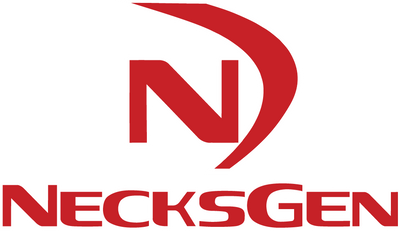What is SFI Spec 38.1?
SFI Spec 38.1 Rules and the History of Head and Neck Restraints in U.S. Auto Racing
Head and neck restraints (HNRs), also known as frontal head restraints (FHRs), are critical safety devices in auto racing, designed to protect drivers from severe neck injuries during high-impact crashes. The SFI Foundation’s Specification 38.1 outlines the rigorous standards these devices must meet to ensure driver safety. This blog post will explore the SFI Spec 38.1 rules and traces the history of head and neck restraints in U.S. auto racing.
SFI Spec 38.1: The Standard for Head and Neck Restraints
The SFI Foundation, a non-profit organization established in 1978, sets performance standards for motorsports equipment to enhance safety. SFI Spec 38.1 specifically governs head and neck restraint systems, ensuring they reduce neck stress and head movement during crashes without relying on helmet impacts into structures or nets. Below are the key aspects of SFI Spec 38.1:
1. Performance-Based Testing
- SFI Spec 38.1 is a performance standard, not a design specification, allowing manufacturers flexibility in device design while mandating strict safety outcomes.
- The dynamic sled test simulates violent frontal impacts, measuring the device’s ability to reduce neck tension and compression. Devices must withstand impacts up to 70 G’s to prevent basilar skull fractures, a leading cause of racing fatalities.
- Testing evaluates structural integrity and effectiveness in decreasing neck stress, ensuring devices protect against fatal injuries.

2. Certification and Recertification
- Devices must pass SFI’s rigorous testing to earn the SFI 38.1 certification, indicated by a label on the device.
- Since January 1, 2012, SFI requires recertification every five years, performed by the original manufacturer. This ensures devices remain effective, as tethers may stretch and deteriorate over time or after impacts.
- After a major crash, manufacturers recommend returning the device for inspection or recertification, as damage like delamination or cracking may compromise safety.
3. Design and Fit Requirements
- HNRs must allow freedom of movement for the head, torso, and arms, enabling drivers to operate the vehicle under racing conditions.
- Devices connect to the driver’s helmet via tethers and anchor kits, with harnesses (typically 5- to 8-point) securing the device to the body. The NecksGen REVX carbon and the Simpson Hybrid S are exceptions, proven to be effective with standard 3-point seat belts for HPDE instructors.
- Proper fit is critical. The device's tethers must be the correct length in order to provide adequate protection.
- Yoke style devices are typically designed for specific seating angles:
4. Compatibility with Harnesses
- Most HNRs require 2- or 3-inch harnesses, with some early designs accommodating only 2-inch belts. Modern devices are versatile, working with either size.
- The device must be fitted correctly, with harnesses sitting over the HNR to secure it during a crash.
5. Differences Between SFI 38.1 and FIA 8858
- FIA-certified devices (FIA 8858-2010) often meet SFI 38.1 standards, but SFI-certified devices do not automatically qualify for FIA homologation due to specific design requirements that the FIA holds. The FIA requires devices to fit properly in one of their 2 static fixtures. Devices that don't fit these fixtures cannot be tested by the FIA.
- FIA tethers have expiration dates, while SFI tethers require recertification every five years. FIA devices generally have no expiration unless damaged.
History of Head and Neck Restraints in U.S. Auto Racing
The development of head and neck restraints in the United States revolutionized motorsports safety, driven by tragic incidents and advancements in biomechanical engineering.
Early Days: Limited Safety Measures
In the 1970s and 1980s, auto racing safety focused on basic protections like helmets and seat belts. Drivers often raced in cotton clothing, with minimal fire-resistant gear. Neck injuries, particularly basilar skull fractures, were common but poorly addressed due to limited understanding of crash dynamics.
The HANS Device: A Game-Changer
The Head and Neck Support (HANS) device, invented by Dr. Robert Hubbard in the 1980s, marked a turning point. Developed in response to fatal neck injuries, the HANS device provided an alternative load path to reduce neck stress during frontal impacts. It gained traction after high-profile deaths, notably Dale Earnhardt’s basilar skull fracture at the 2001 Daytona 500.
- Adoption in the U.S.: NASCAR mandated HNRs in 2001 following Earnhardt’s tragedy, accelerating their use across U.S. sanctioning bodies like NHRA, IndyCar, and USMTS. By the early 2000s, the HANS device became the gold standard.
- FIA Homologation: In 2002, the FIA established the 8858 standard for FHRs, homologating the HANS device. Initially, only three manufacturers—Stand 21, Schroth, and HANS/Simpson—were approved to produce FIA-certified HANS devices. A U.S. patent limited Stand 21 and Schroth sales until February 2019.
- Design: The HANS device rests on the driver’s shoulders and chest, using the shoulder harness to absorb crash energy. Its design has remained largely unchanged since its introduction.
Evolution and Competition
The success of the HANS device spurred innovation, with new manufacturers entering the market:
- Simpson Hybrid: Introduced in the late 2000s by Safety Solutions (acquired by Simpson in 2010), the Hybrid system uses the back to distribute crash forces, offering a sleeker design and compatibility with 3-point belts.
- NecksGen, ZAMP, and Schroth: By the 2010s, brands like NecksGen, ZAMP (Z-Tech Series), and Schroth offered SFI 38.1-certified alternatives, providing options for different budgets and racing applications. NecksGen’s REV model, for example, targets budget-conscious racers.
Mandates and Wider Adoption
By the 2010s, most U.S. racing organizations, including NASA, SCCA, and NHRA, required SFI 38.1 or FIA 8858-compliant HNRs for competition. The shift from optional to mandatory use reflected growing awareness of basilar skull fractures, which occur when the head moves forward rapidly while the body remains restrained.
Challenges and Controversies
- Cost and Accessibility: Early HNRs were expensive, prompting manufacturers to develop budget-friendly options like the NecksGen REV. Sharing devices among drivers also became common to reduce costs.
- International Standards: In 2014, the Confederation of Australian Motorsport (CAMS) controversially banned SFI 38.1 devices in favor of FIA standards, highlighting tensions between SFI and FIA certifications. SFI criticized the decision, noting its global acceptance by NASCAR, IndyCar, and even the FIA.
Impact on Safety
Head and neck restraints have drastically reduced fatalities from basilar skull fractures, once the leading cause of death in auto racing. Devices like the HANS, Simpson Hybrid, and NecksGen have made racing safer across disciplines, from NASCAR to grassroots dirt track racing. Ongoing innovations, such as lighter materials and adjustable tethers, continue to improve comfort and performance.
Conclusion
SFI Spec 38.1 ensures head and neck restraints meet stringent safety standards, protecting drivers from life-threatening injuries. From the HANS device’s introduction in the 1980s to the diverse options available today, HNRs have transformed U.S. auto racing safety. As sanctioning bodies enforce these standards and manufacturers innovate, head and neck restraints remain a cornerstone of motorsports safety, saving countless lives on the track.
For more information, visit the SFI Foundation or check with your racing organization’s rulebook.

